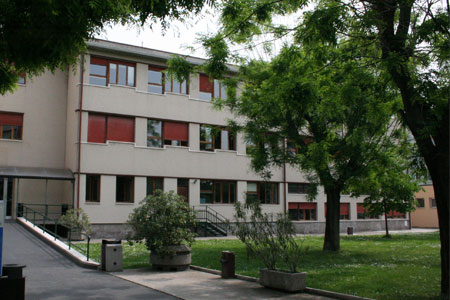- Autori:
-
Van Hooren, Bas; Aagaard, Per; Monte, Andrea; Blazevich, Anthony J
- Titolo:
-
The role of pennation angle and architectural gearing to rate of force development in dynamic and isometric muscle contractions
- Anno:
-
2024
- Tipologia prodotto:
-
Articolo in Rivista
- Tipologia ANVUR:
- Articolo su rivista
- Lingua:
-
Inglese
- Formato:
-
Elettronico
- Referee:
-
Sì
- Nome rivista:
- SCANDINAVIAN JOURNAL OF MEDICINE & SCIENCE IN SPORTS
- ISSN Rivista:
- 0905-7188
- N° Volume:
-
34
- Numero o Fascicolo:
-
5
- Editore:
- Blackwell Munksgaard:PO Box 2148, Periodicals Department, DK-1016 Copenhagen K Denmark:011 45 33 755913, EMAIL: agentservices@oxon.blackwellpublishing.com, INTERNET: http://www.blackwellmunksgaard.com, Fax: 011 45 77 333377
- Intervallo pagine:
-
1-14
- Parole chiave:
-
belly gearing; biomechanics; gear ratio; muscle architecture; muscle mechanics; performance
- Breve descrizione dei contenuti:
- Background: Associations between muscle architecture and rate of force development (RFD) have been largely studied during fixed-end (isometric) contractions. Fixed-end contractions may, however, limit muscle shape changes and thus alter the relationship between muscle architecture an RFD. Aim: We compared the correlation between muscle architecture and architectural gearing and knee extensor RFD when assessed during dynamic versus fixed-end contractions. Methods: Twenty-two recreationally active male runners performed dynamic knee extensions at constant acceleration (2000°s-2) and isometric contractions at a fixed knee joint angle (fixed-end contractions). Torque, RFD, vastus lateralis muscle thickness, and fascicle dynamics were compared during 0-75 and 75-150 ms after contraction onset. Results: Resting fascicle angle was moderately and positively correlated with RFD during fixed-end contractions (r = 0.42 and 0.46 from 0-75 and 75-150 ms, respectively; p < 0.05), while more strongly (p < 0.05) correlated with RFD during dynamic contractions (r = 0.69 and 0.73 at 0-75 and 75-150 ms, respectively; p < 0.05). Resting fascicle angle was (very) strongly correlated with architectural gearing (r = 0.51 and 0.73 at 0-75 ms and 0.50 and 0.70 at 75-150 ms; p < 0.05), with gearing in turn also being moderately to strongly correlated with RFD in both contraction conditions (r = 0.38-0.68). Conclusion: Resting fascicle angle was positively correlated with RFD, with a stronger relationship observed in dynamic than isometric contraction conditions. The stronger relationships observed during dynamic muscle actions likely result from different restrictions on the acute changes in muscle shape and architectural gearing imposed by isometric versus dynamic muscle contractions.
- Pagina Web:
-
https://doi.org/10.1111/sms.14639
- Id prodotto:
-
139247
- Handle IRIS:
-
11562/1125552
- ultima modifica:
-
7 luglio 2024
- Citazione bibliografica:
-
Van Hooren, Bas; Aagaard, Per; Monte, Andrea; Blazevich, Anthony J,
The role of pennation angle and architectural gearing to rate of force development in dynamic and isometric muscle contractions
«SCANDINAVIAN JOURNAL OF MEDICINE & SCIENCE IN SPORTS»
, vol.
34
, n.
5
,
2024
,
pp. 1-14
Consulta la scheda completa presente nel
repository istituzionale della Ricerca di Ateneo 








